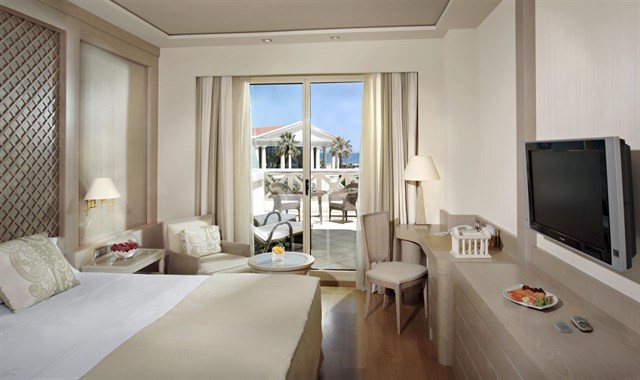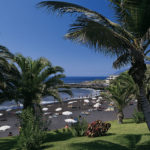The Canary Islands have been the main destination chosen by non-residents during the last year 2016, registering 28.5% of total overnight stays in Spain and 10.1% more than in 2015.
Meanwhile, Spanish hotels recorded 330 million overnight stays last year, which is 7.1% more than in 2015, according to data released Monday by the National Statistics Institute (INE).
In this way, overnight stays grew in 2016 for the fourth consecutive year and also at a faster rate. After the stagnation registered in 2012, in 2013 increased by 1.9%, while in 2014 rose by 3.2%. In 2015, growth was even higher, at 4.4%.
The increase in overnight stays experienced last year is due to the 9.3% increase in overnight stays by non-residents, together with a 3.1% increase in overnight stays by residents in Spain.
Resident travelers, who accounted for 49.7% of the total, performed 34.5% of total overnight stays throughout 2016.
The annual rate of change in overnight stays in 2016 was 2.7 points higher than that registered in 2015, which was 4.4%. Of the total overnight stays registered in 2016, almost 67.1% occurred between May and October.
Andalusia, Catalonia, Comunidad Valenciana and Comunidad de Madrid were the main destinations for travelers residing in Spain in 2016, with variation rates in the number of overnight stays of 0.6%, -0.4%, 0.3% and – 0.1%, respectively.
5.4% IN PRICES
Hotel prices increased by 5.4%, an increase of 0.7 points compared to 2015, with a turnover per occupied room (ADR) of 82.3 euros on average and an income per available room (RevPar) of 53.9 euros.
By category, average turnover is 181.4 euros for 5-star hotels, 88.6 euros for four and 66.8 euros for three-star hotels. Revenues per room available for these same categories were 126.3, 66.2 and 46.4 euros, respectively.
The autonomous communities that presented the highest rates were Canaries (+ 6.8%), Baleares and Comunidad Valenciana (+ 6.7%, in both cases). On the other hand, the Comunidad Foral de Navarra (+ 1.2%) and Castilla-La Mancha (+ 1.1%) were the autonomous communities where prices rose the least in 2016.
CANARIAS, MAIN DESTINY CHOSEN
The main destination chosen by non-residents in 2016 was the Canary Islands, with 28.5% of total overnight stays. In this community, overnight stays of foreigners increased by 10.1% compared to 2015. The following destinations were Baleares (24.9% of the total) and Catalonia (17.9%). In these communities, overnight stays increased by 8.1% and 6.9%, respectively.
During 2016, 59.9% of the places offered were covered, an increase of 5.3% over the previous year. The degree of occupation by places at the weekend increased by 4.3% and stood at 65.1%. The Balearic Islands was the community with the highest degree of occupation by places during 2016, with 79.5%. It was followed by the Canary Islands (78.6%) and the Valencian Community (60.4%).
The main tourist areas by number of overnight stays were the island of Mallorca (with over 41.9 million overnight stays), the island of Tenerife (with 23.3 million) and the Barcelona area (19.4 million).
The tourist spots with more overnight stays in 2016 were Barcelona, Madrid and San Bartolomé de Tirajana. Arona was the tourist point with the highest average occupancy rate (83%) and also the highest occupancy rate in the middle weekend (83.6%).
By markets, travelers from the United Kingdom and Germany made more than 107 million hotel overnight stays in 2016, half of all overnight stays by non-resident travelers. UK travelers’ overnight stays increased by 11%, while those by the Germans rose by 6.6%.
Overnight stays by travelers from France, Italy and the Netherlands (the following issuing markets) recorded annual rates of 6.4%, 7.8% and 13.4%, respectively.
Among the main emitters, the biggest increases in overnight stays were Poland (+ 30%), Denmark (+ 18.9%) and Sweden (+ 17.3%).
Courtesy of Europa Press
Photo GVA



